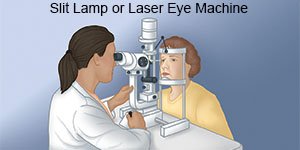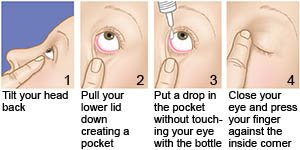Photophobia
Medically reviewed by Drugs.com. Last updated on Apr 6, 2025.
What is photophobia?
Photophobia is a condition that causes your eyes to be sensitive to light.
What increases my risk for photophobia?
- Trauma to your eye, such as a scratch, scrape, or foreign object
- Inflammation of a nerve, gland, or muscle in your eye
- An eye infection
- Headaches, including migraine or cluster headaches
- LASIK or cataract surgery
- Dry eyes
What other signs and symptoms may occur with photophobia?
You may have any of the following, depending on the cause:
- Pain or discomfort
- Yellow or green drainage from your eye
- Eye redness
- Fever
How is the cause of photophobia diagnosed?
Your healthcare provider will examine your eyes and ask when your symptoms began. Your provider may ask if you have other symptoms, such as fluid draining from your eyes. You may need the following tests:
- A visual acuity test is used to check your vision in both eyes.
- A slit-lamp exam is used to check your eye with a microscope for inflammation or injury. A dye may be used to look for damage to your cornea (the surface of your eye).

- A corneal sample may be taken from an area of your eye to test for infection. Your healthcare provider will numb your eye and remove a small piece of your cornea. This sample will be sent to a lab for testing.
How is photophobia treated?
Photophobia is treated based on the cause. You may be given any of the following eyedrops:
- Artificial tears are eyedrops that help moisturize your eyes. Moisture in your eye may help relieve your photophobia. Artificial tears are available without a prescription. Ask your healthcare provider how often to use artificial tears.
- Antibiotics help treat a bacterial infection.
- Steroids help treat eye swelling.
- Antivirals help treat a viral infection.
- Antifungals help treat a fungal infection.

What can I do to manage photophobia?
- Use all eyedrops as directed. Do not let the tip of the eyedrop bottle touch anything, including your eye. Your healthcare provider can show you how to put eyedrops in your eye. Wash your hands before you use eyedrops. Throw away eyedrops that have expired or become contaminated.
- Wear sunglasses as directed. Sunglasses help decrease exposure to light.
- Avoid light as much as possible. Turn off lights and keep blinds or curtains shut.
- Do not wear contact lenses. Contacts may cause eye discomfort.
- Do not wear eye makeup. Eye makeup may cause irritation.
When should I seek immediate care?
- You have severe eye pain.
- You have vision loss.
When should I call my doctor?
- You have a fever.
- You have changes in your vision.
- Your symptoms do not improve after treatment.
- You have questions or concerns about your condition or care.
Care Agreement
You have the right to help plan your care. Learn about your health condition and how it may be treated. Discuss treatment options with your healthcare providers to decide what care you want to receive. You always have the right to refuse treatment. The above information is an educational aid only. It is not intended as medical advice for individual conditions or treatments. Talk to your doctor, nurse or pharmacist before following any medical regimen to see if it is safe and effective for you.© Copyright Merative 2025 Information is for End User's use only and may not be sold, redistributed or otherwise used for commercial purposes.
Further information
Always consult your healthcare provider to ensure the information displayed on this page applies to your personal circumstances.
